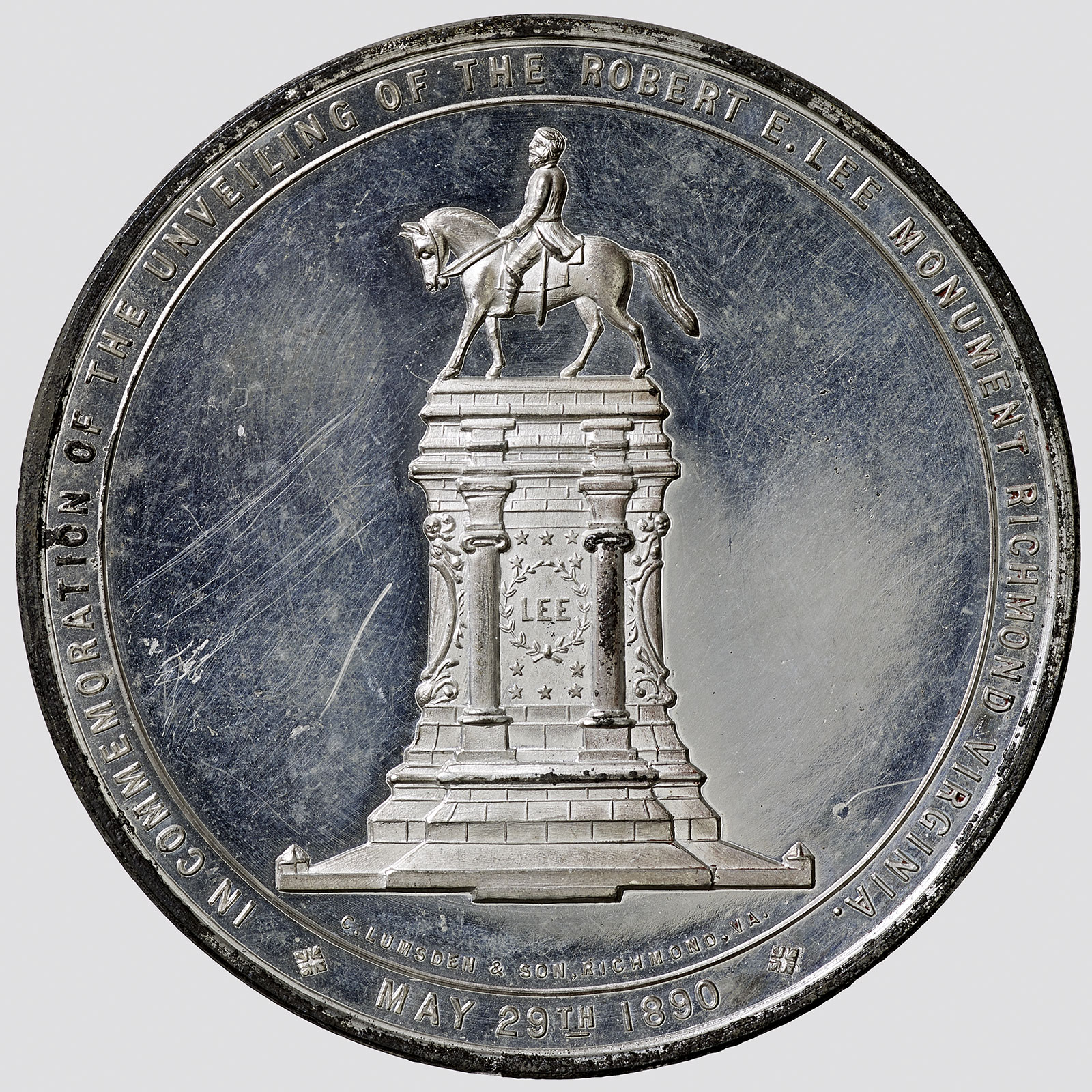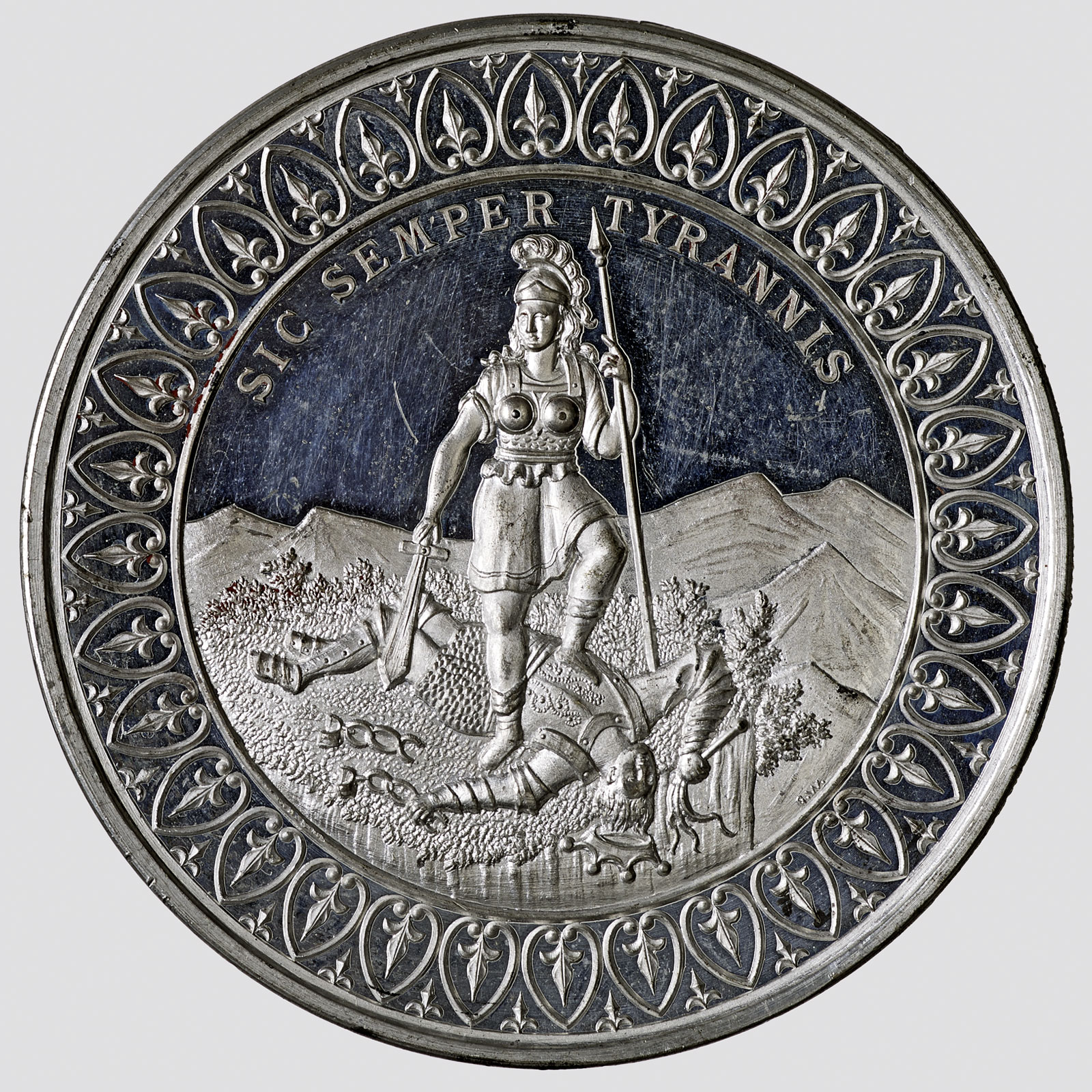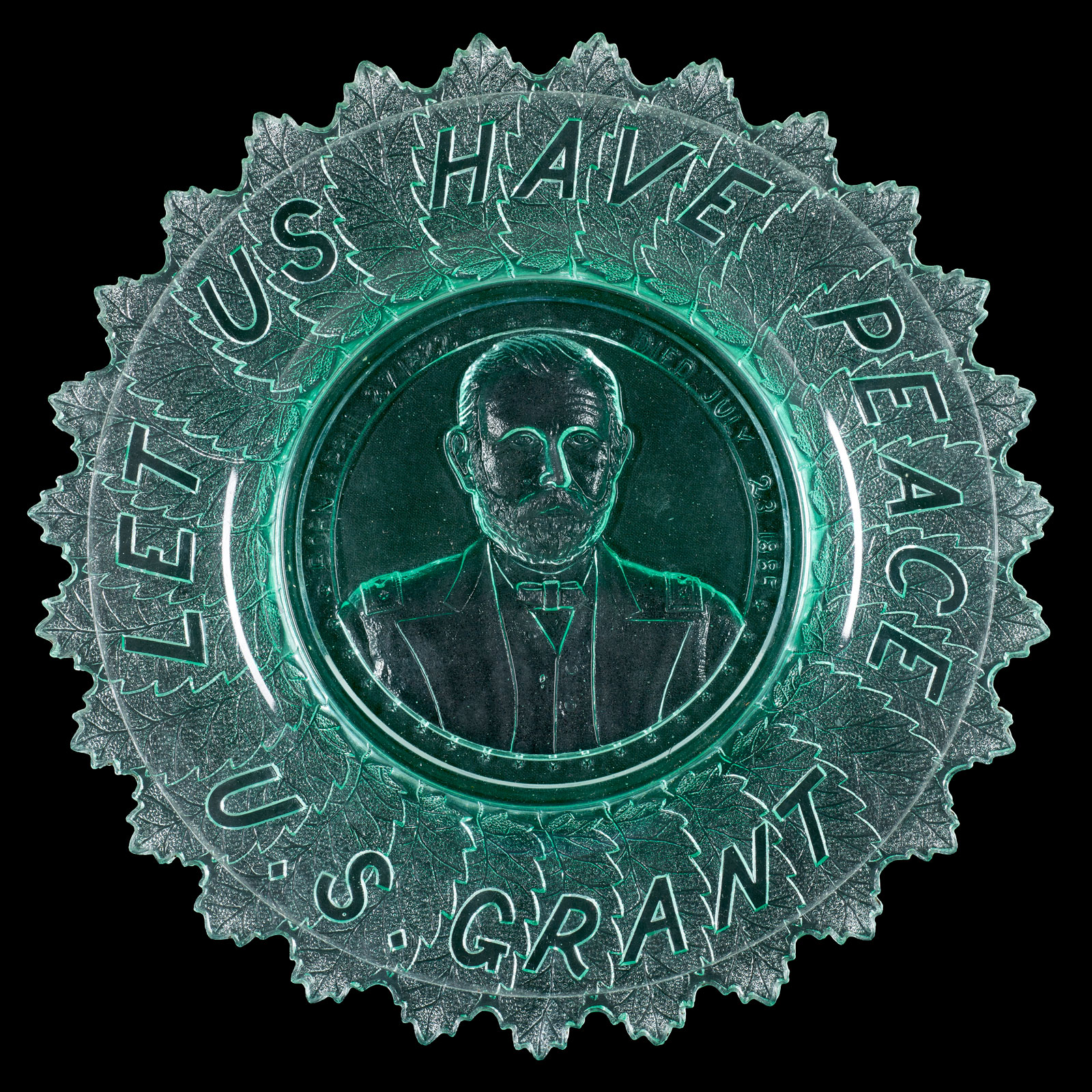April 9, 2021
Civil War Commemorative Medallion

Medallion, In Commemoration of the Unveiling of the Robert E. Lee Monument, Richmond, Virginia, 1890
C. Lumsden and Son, Richmond, Virginia, manufacturer
The Wolfsonian–FIU, The Mitchell Wolfson, Jr. Collection, 83.1.332
This year marks the 156th anniversary of the end of the American Civil War, which came to a ceremonial close on April 9, 1865, when General Robert E. Lee—who represented the South and the rebelling Confederate States of America—surrendered to General Ulysses S. Grant, his counterpart for the North. The gesture reunited the Union and saw Lee and Grant's formerly divergent paths converge in the interest of restoring peace to a divided nation.
The medallion above, issued for the unveiling of the Robert E. Lee Monument in Richmond, Virginia, depicts an equestrian statue of Lee on an ornate pedestal at the Avenue of Monuments. The back side features the state seal of Virginia: a female warrior with a spear alongside an old Roman inscription "sic semper tyrannis," or "thus always to tyrants," and is embellished with a blue background and an ornate fleur-de-lis border. Said to have been first introduced by the Romans, medallions as an art form grew in popularity over the years and materials such as copper, gold, and silver eventually replaced the original bronze.

One of countless minted after the war to commemorate the Confederacy, this medallion glorified the already larger-than-life leaders of the Confederate Army—men who chose to commit treason against the United States in defense of slaveholding (with Lee himself owning more than 200 slaves). Such medallions, along with scores of monuments to Confederate leaders, were the symbolic expression of a movement to roll back the gains made by freed slaves during Reconstruction and reimpose a legal regime of white supremacy in the South. Like many such monuments, the statue of Lee in Richmond is now the subject of intense struggle between those who wish to remove it—including the governor of Virginia—and those who believe it should stay. It is interesting, in that regard, that Lee might not have approved of the monument; he was quoted as saying that commemorative tributes should "follow the examples of those nations who endeavored to obliterate the marks of civil strife, to commit to oblivion the feelings engendered."

Commemorative artifacts honoring Grant likewise demonstrate the role of war heroes in public memory and reveal the importance of peacekeeping in ensuring a successful national recovery. Mass-produced glassworks like this pressed-glass U. S. Grant plate, newly affordable to a rising middle class, were valued by patriotic Americans as beautiful displays of nationalist sentiment. The serrated leaf edge bears the inscription "Let Us Have Peace," which became the former general's slogan after his presidential election in 1869. This rallying cry is still resonant today, as Americans continue to fight for the same lynchpin of peace—equality—that Grant, a complicated figure, fought for during his two terms. Grant's layered legacy includes passing the 15th amendment (which gave African-American men the right to vote) and taking forceful federal action against the Ku Klux Klan, though it is important to note he also owned a slave before the war and even conceived of a segregationist plan for Black Americans, stories and facts you won't find in these celebratory pieces.
– Rafael Portilla, Metadata Squad graduate research assistant, and Marlene Tosca, art director
